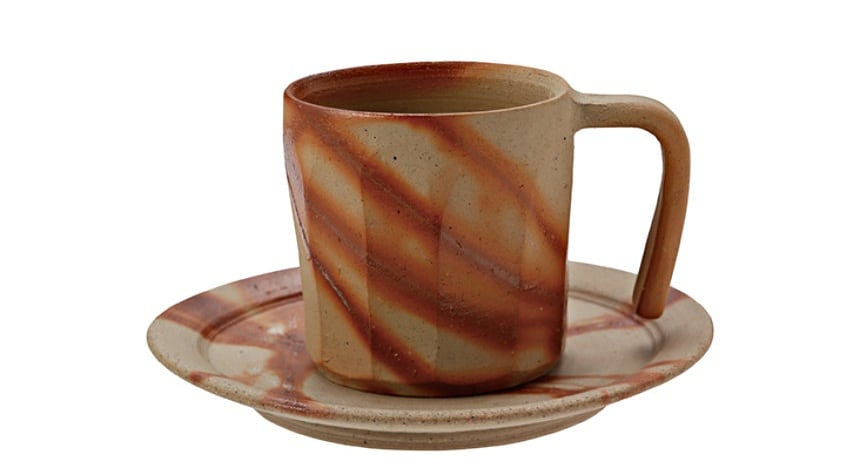Beautiful Japanese Pottery
The pottery of Japan is internationally renowned for its unique aesthetic and style. These cups from The Wonder 500™ collection allow you to drink out of pieces of art every day!
7. The Iro-Kesho Cup (Niigata)
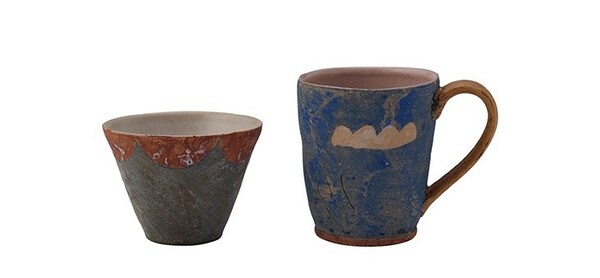
https://thewonder500.com/product/iro-kesho-cup-cup-in-colored-glaze/?lang=en
Katsunori Yaoita, who makes these cups, studied pottery at a junior college of art, and has since been freely creating pieces with his unique worldview. This cup is made of white clay from Shigaraki, an area steeped in the tradition of pottery production, and has a strong expressiveness that is much like a modern work of art.
The colorful exterior was achieved by adding colors in layers in a technique called iro-kesho, an original method developed by Yaoita. It’s quite a complex process that no one before him had thought to try. When gazing at it, its aura is reminiscent of a scene in a movie: quiet, poetic, and full of heart. On one hand, it’s simply a functional cup with a handle; but on the other, it’s perfectly suitable for display. This piece will add some vivid color to your everyday life, with the added bonus of knowing each cup is a unique creation.
6. The Papery Thin Porcelain Cup (Gifu)

https://thewonder500.com/product/sukitoo-papery-thin-porcelain/?lang=en
The city of Toki, home to Mino pottery, is where the 120-year-old pottery producer Marunao Seitosho is located. This pottery producer has a history of creating porcelain exported to Europe. Usually painted with patterns, the surface of the pottery is beautiful, and the tableware featuring those delicate patterns is well regarded overseas as well.
The most outstanding characteristic of Marunao Seitosho is porcelain that is light and thin like eggshells. This thin, 1-millimeter unglazed pottery—often referred to as eggshell—is shaped by hand and fired at a high temperature. There are only a few kilns in Japan that possess such advanced skills.
The Sukitoo Series (papery thin porcelain) is purposely created in white to make the most of this beautiful porcelain, which turns whatever is poured into it transparent when held up to the light. The delicate shape and temperature that come through when held in the hand embody skills unique to Japan.
5. 'Wine Wan' Wine Cups (Yamanashi)
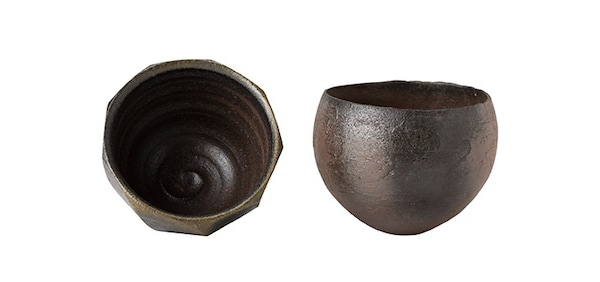
https://thewonder500.com/product/wine-wan-wine-glasses/?lang=en
The Wine Wan (or wine cup) is a Japanese tableware piece for wine created in Yamanashi Prefecture, which is known as a producer of Western-style wine representative of Japan.
Since the Meiji Period (1868-1912), Yamanashi has had a culture of drinking wine from teacups, and at the Tobo Kamahachi kiln, every effort was made to develop a cup that would offer more ways to enjoy wine. This resulted in the Wine Wan, which is fired in a firewood kiln. The manufacturing process uses only clay that is fired at high temperature and does not apply glaze. It is a traditional way of firing pottery that has a history of over 1,000 years in Japan.
The pottery surface is rough, and the makers' finger marks remain inside so that the merits of the clay appear unaltered. This means there is more surface area to come in contact with the air and draw out the best qualities of wine. The Wine Wan fits nicely in the hand and allows both wine and Japanese culture to be enjoyed.
4. Pure Titanium Double-Walled Tumbler (Niigata)
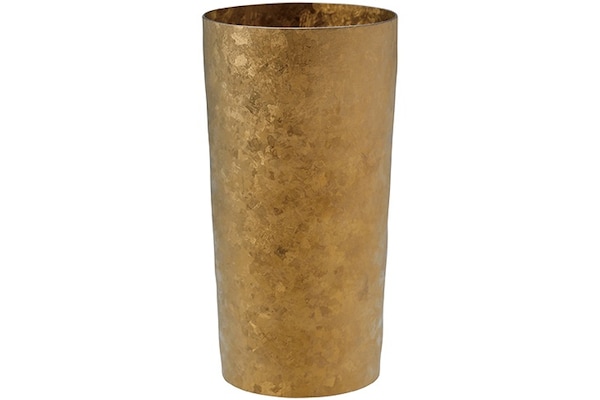
https://thewonder500.com/product/jun-chitan-sei-nijyuu-tumbler-premium-light-tumbler-made-of-pure-titanium-270ml-and-350ml/?lang=en
The texture of the surface is created by the varying crystal patterns that appear when titanium is heated in an oven at 1,055 degrees Celsius (1,931°F). This tumbler, although metal, feels like silk, and has a very unique presence. With its double-layer composition, it’s a very good insulator, keeping hot or cold drinks just as they ought to be. At the same time, the temperature is contained well within, so you don’t have to worry about burning your hand, or condensation on the outside of the tumbler.
Titanium is also tasteless, odorless, lightweight, strong, and doesn’t rust. However beneficial these characteristics, it is also known for being difficult to process and treat. The Horie Corporation, however, was able to develop a way to manipulate it quite freely. In fact, it carried out research and development efforts in the city of Tsubame, Niigata Prefecture, an area known for metal machining, that took several decades. This tumbler is a perfect example of how modern design and ingenuity can seamlessly blend with the ideals of traditional Japanese pottery.
3. The Kaoru Cup (Fukuoka)
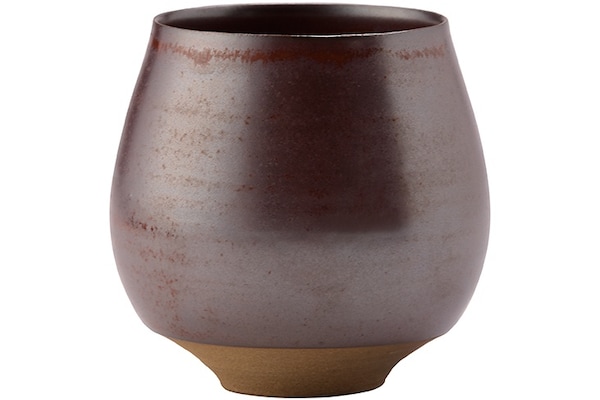
https://thewonder500.com/product/kaoru-cup-pottery-cup/?lang=en
From olden times, Japanese culture has embraced sado (the tea ceremony) for entertaining guests with tea. Takatoriyaki ceramics, which have a history of about 400 years, have long been loved by people for their use in the ceremony. Takatoriyaki is distinguished by its thinness and traditional blend of glaze colors.
At Setsuzan Onimaru’s workshop, the painstaking manufacturing process starts by collecting soil and working with wood ash and straw ash by hand. By firing the items in a firewood kiln, he produces ceramics that will live on, transcending eras.
Thanks to a shape that exploits the distinctive features of Takatoriyaki, the Kaoru Cup is a receptacle that firmly delivers a drink’s accumulated fragrance to the mouth and nose, and conveys the inherent flavor more smoothly and directly. A feeling of the elegance of history and tradition emanate from its body.
2. Hana Kessho Free Cup (Kyoto)
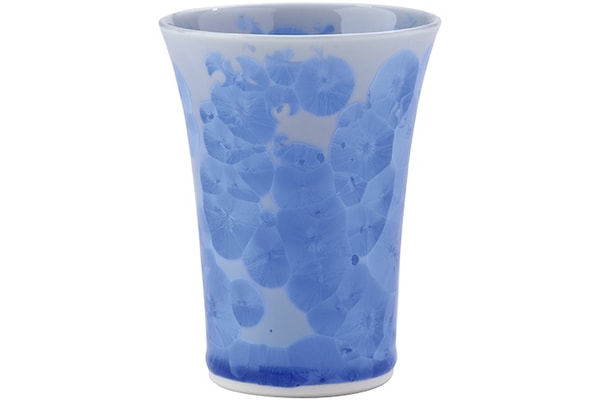
https://thewonder500.com/product/hana-kessho-ao-porcelain-cup/?lang=en
Kyo Ware and Kiyomizu Ware are traditional crafts cultivated over 1,000 years in the culture of the ancient capital of Kyoto. They were in demand as containers and luxury items for the aristocracy and tea masters, and were refined by incorporating designs and techniques from inside and outside the country.
This item is created with a lavish amount of flowers of zinc glaze as a piece of pottery with origins in that history. The glaze, containing flowers of zinc, crystallizes during the cooling process, creating a beautiful pattern that looks like various sizes of flowers blossoming. Veteran artisanal skill is required for the content of the special glaze and to control the 1,300 degree-Celsius (2,372°F) firing temperature in one-degree increments. The crystal patterns formed from this process can appear a pale blue or purple depending on the light source, and no two pieces are alike.
This unique, fascinating piece is suitable for everyday use and also makes the perfect gift.
1. Hidasuki Cup & Saucer (Okayama)
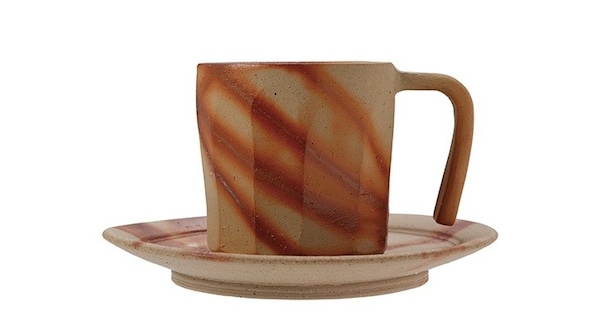
https://thewonder500.com/product/hidasuki-cup-saucer-cup-and-saucer-in-bizen-pottery/?lang=en
The Hidasuki cup and saucer is an exquisite example of Bizen pottery. Hidasuki is the name of the fiery scarlet pattern created by wrapping the ceramic green body of the items with rice straw before placing them in the furnace. The pattern has a simple, rustic feel about it.
Bizen pottery, which has been created in the town of Bizen since around the 12th century, is made only with Bizen clay, rice straw and fire without glaze or ceramic painting. That is why it is also known as “the art of earth and fire.” Bizen pottery has many fine examples of tea ware, and was favored by the famous master of the tea ceremony, Sen no Rikyu.
Clay is particularly important for Bizen pottery. High-quality pot clay is meticulously kneaded to remove air bubbles so that the item does not break during baking. The items are then baked for a long time in the furnace to tighten their core. This process extracts the natural feel and appearance of the clay, creating the warm and soft ambiance for which Bizen pottery is so famous.
This cup and saucer, with its fiery pattern, represent a wonderful example of this art. Simple and warm, they all but emanate the natural fragrance of the Bizen earth.

